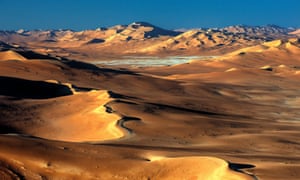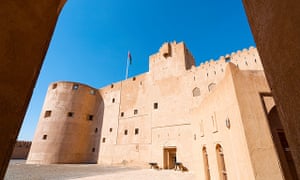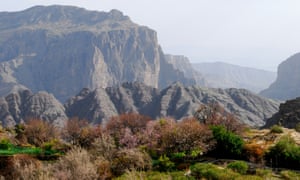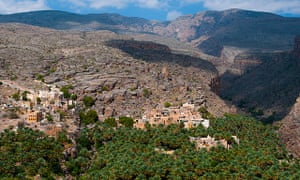Researching this romantic corner of the Arabian peninsula for her book, Katherine Webb fell in love with the beautiful calm of the desert

My novel is set in Oman, so I visited as a researcher not as a tourist. Rather than relaxing, I wanted to see as much as possible: to explore its cities and mountains, and the Empty Quarter, the world’s largest sand desert.
Unlike the UAE, Oman retains a traditional look and feel. It doesn’t have the high rises you find all over the Emirates. In Oman you can still see the Arabia of 100 years ago, and that was important to me and for the book.
I was writing about early desert exploration and the call of the wild. Look at a map of Oman and you see Muscat and a cluster of other, smaller cities in the north, beachside Salalah in the south and a whole lot of nothing in between. It was that “nothing” that I was most interested in. The images of rolling sand dunes and memories of watching Lawrence of Arabia may be familiar to many but the feeling when you get out there is really something “other” – it’s quite alien.
You’ve never heard silence until you get to the Empty Quarter. The loudest sound is your breathing and you realise that in the UK you can always hear something – birds or the breeze, a car in the distance – but when the wind drops in the Empty Quarter you hear nothing. It’s beautifully still and, in a good way, makes you feel very small.

Nothing on my trip beat Fort Jabrin for sheer romance. Oman has been invaded a lot over the years and has many ancient forts and watchtowers. Fort Jabrin, built in the 1600s, is at the edge of the desert south-west of Muscat, and from its windows you can gaze at the parched horizon as the hot wind rolls in. With whitewashed walls, elaborately painted ceilings and simple furnishings, this is the Arabian castle of Scheherazade’s stories. Nizwa fort is more prosaic and warlike; Bahla fort is bigger and more dramatic; but I lost my heart to Jabrin.
Muscat is lively and modern but the sultan has kept a tight leash on developmentin the city. It isn’t at all futuristic looking, but doesn’t have elegant decay you associate with places like Havana, either. I was hoping to see some of that but buildings are either restored or rebuilt, pristine, bright and white.
Omanis are welcoming to tourists but they are not rebuilding their country for them. Tourism is encouraged but the changes being made are sensitively done; you can’t get a full English breakfast or find bars showing Sky Sports – let’s put it that way.

We ate in small, backstreet cafes, often run by Indians and Pakistanis, as well as Turkish and Lebanese ones. I don’t even remember them having names or signs. We’d bundle in to strip-light cafes, sit at a long table and Ahmed, our guide, would talk to the owner and minutes later a slew of food would arrive: flatbreads, hummus, lovely stewed chicken and great vegetable curries. These were places where farmers just wandered in for lunch, off their quad bike or camel.
Omanis refer to the valley leading up to Jebel Shams, in Jebel Akhdar range, as their Grand Canyon. There is a via ferrata climbing route that I would have loved to do, but it was closed when I was there. Even if you are just hiking there, though, it makes for a wonderful trek.
It’s not a secret destination, but my top tip would be a visit to Misfat al Abriyeen. This is a fantastic terraced village on the side of a mountain that hasn’t changed in centuries. It has date palms and pomegranate trees and a falaj system for channelling water down through the terraces. It’s beautiful and as quintessentially Arabic an experience as you could hope for.
I was surprised to find many undeveloped, gorgeous beaches dotted all along the coast between Muscat and Salalah. So, if you don’t go into the desert, you could explore them instead. Turtles nest along there, and some of the beaches look entirely pink because of these amazing, tiny pink shells on them.
•Katherine Webb is author of The English Girl, published by Orion, £16.99. To order a copy for £12.99 including UK p&p visit the guardian bookshop or call 0330 333 6846

















